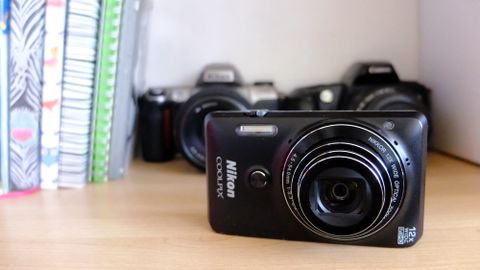Why you can trust TechRadar
If the light is great, this camera performs pretty well. Colours are vibrant and punchy, and detail is resolved to a decent enough standard if you're going to be printing or viewing images at A4 or less.
However, as the light drops and you're forced to use higher sensitivities, the performance is less than impressive. ISO 800 is the maximum I would recommend using, unless you're particularly desperate and you can't use flash. At ISO 1600, detail becomes very smudgy, even when looking at the pictures at reasonably small sizes, and it becomes worse still at ISO 3200 or ISO 6400.
On the plus side, the camera's automatic white balance system copes well with different lighting conditions, and doesn't result in images with overly warm tones under artificial lighting. You can change this setting though if its proving particularly problematic, though.
Similarly, the camera's all-purpose metering system does a decent job of producing accurate exposures in the majority of conditions. You might find in particularly bright or high-contrast situations, dialing in some positive or negative exposure compensation helps to produce a more balanced image.
Focusing is a little problematic at times, especially when trying to take close-ups. Even with macro mode activated, the camera can struggle to focus, and what's worse can sometimes produce false positives - suggesting that focus has been acquired when it clearly hasn't. On a more positive note, focusing at longer distances (such as when photographing landscapes) is much better – especially in good light.
At the furthest reach of the telephoto optic, detail is resolved well, and it is perhaps only in this area that the S6900 is a better choice than the average mobile phone. There's also a digital zoom, which although not as good as the optical zoom, isn't too bad – and useful if you're really desperate to get closer to a subject.
Verdict
It seems as if camera manufacturers are intimidated by the onslaught of mobile phones, and are producing cameras like this in a bid to compete.
While this is a good camera if the light is good, or if you need a zoom lens, for the most part, your smartphone is likely to be capable of taking just as good, or probably better, shots.
If you already own a smartphone equipped with a great camera, and there is an abundance of these nowadays, the S6900 only makes sense if you really want a completely separate camera. This can be handy if you're looking for a holiday camera, or something to sling in your bag or pocket on a night out and not have to worry about battery life or similar problems associated with smartphones.
It's a shame though that the camera couldn't be just a little bit better. It's a fun idea having the stand to help with selfies, but the touchscreen is nowhere near as responsive as the average smartphone, which makes it frustrating to use at times. It's nice to see easy to use Wi-Fi/NFC integration, but it could be better by offering you greater control when using the app.
We liked
The stand really does help when shooting hands-free selfies, and it can be used in either a portrait or horizontal orientation for maximum flexibility. The addition of a front facing shutter release button and a touch sensitive screen also helps when using the screen flipped out and facing forward.
We disliked
In low light and higher sensitivity settings, the image performance isn't great, with smudgy, noisy photos at the upper end of the scale. It's not particularly unusual for a compact camera of its kind, but something which most smartphones are dealing with better at the moment.
Final Verdict
The Nikon S6900 is a decent compact for holidays, parties and so on, and the articulating, touch sensitive screen makes it fun to use at times. It's just a shame image quality couldn't be a bit better.
Current page: Performance and verdict
Prev Page Sensitivity and noise images Next Page Sample imagesAmy has been writing about cameras, photography and associated tech since 2009. Amy was once part of the photography testing team for Future Publishing working across TechRadar, Digital Camera, PhotoPlus, N Photo and Photography Week. For her photography, she has won awards and has been exhibited. She often partakes in unusual projects - including one intense year where she used a different camera every single day. Amy is currently the Features Editor at Amateur Photographer magazine, and in her increasingly little spare time works across a number of high-profile publications including Wired, Stuff, Digital Camera World, Expert Reviews, and just a little off-tangent, PetsRadar.


